Car bike rack purchasing advice: how to choose the right product
- What You Need to Know
- Bicycle carriers differ primarily in terms of practicality, mounting, design, safety and space requirements.
- Many models have their own lighting system and must also have this as with rear-mounted types.
- Some products are TÜV-approved.
- Bicycle carriers often have additional anti-theft devices for both the bikes and the carrier.
A bicycle carrier – what is it?
The term bicycle carrier, which is also known as Veloträger in German-speaking Switzerland, defines a device that allows bicycles to be taken along with another vehicle. The device is regularly mounted on the vehicle, for example on a car or on a minibus. There are also interior bicycle carriers. Depending on the design, bicycle carriers have other additional features and functions such as anti-theft devices and lighting systems.
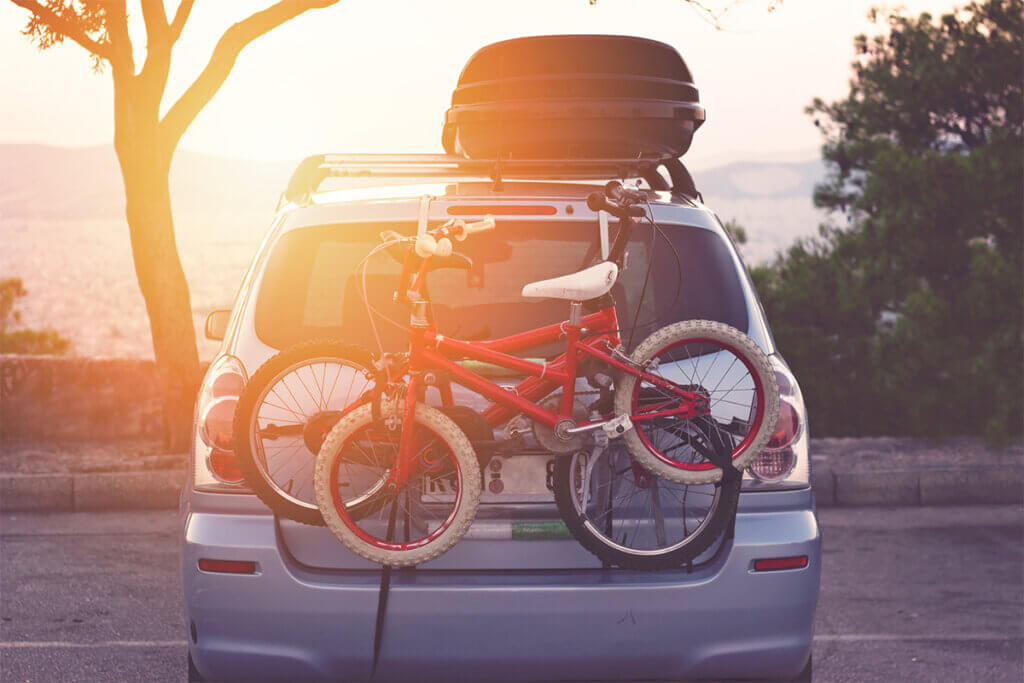
When it was first introduced, the bicycle carrier was considered a great innovation because it made it possible for the first time to transport bulky bicycles in one piece. This means that you no longer have to resort to folding bicycles if, for example, you want to take your own bicycle with you on a holiday trip.
A bicycle carrier called Paulchen
It is generally not well known who invented the bicycle carrier. Only in the case of the special design of the rear carrier can the history of the bicycle carrier be traced back very precisely to Volkmar Kerkow, a trained car mechanic. In 1977, he wanted to accommodate not only his family and luggage but also his bicycles in his VW camper van. Since the interior seemed too small to him, he developed a rear carrier by hand, which his family lovingly christened “Paulchen”. This interesting transport variant for bicycles attracted so much interest that the locksmith constantly found written enquiries on his bus about the origin of the bicycle carrier. The marketing of Paulchen began in 1981. Later, other manufacturers also took up the idea and developed other bicycle carrier forms, such as mounting on the trailer coupling. The roof racks, which are also widely used, are said to go back to corresponding inventions in France and Holland.
What distinguishes a bicycle carrier?
All types of bicycle racks have various features in common:
- They each use a specific area of the vehicle, for example the rear, the hitch trailer or the roof, for mounting and fastening.
- They each have corresponding separate fastening systems for the bicycles. These are either clamps or straps on the frame or also certain brackets that enclose the bicycle frame and the wheels. There are also fastening units for the pedal cranks.
- Each individual bicycle carrier is designed for a specific payload, which is a maximum of about 50 kilograms.
The different types of bicycle carriers
A distinction is made between the following types of bicycle carrier. They differ primarily in the area of the vehicle to which they are attached:
- Roof rack
- Rear carrier
- Carriers for hitch trailers
- Drawbar carrier
- Interior carrier
The individual designs of bicycle carriers are described below:
Roof rack
Bicycle carriers for mounting on the vehicle roof use existing mounting points for roof racks, or they are mounted on their base frame. With this type of bicycle transport, the bicycles stand upright in or against the direction of travel. Roof racks are mainly known from cycling. In rare cases, there are also variants of roof racks that transport the bicycle lying down.

Pro points
- Base area of the vehicle unchanged
- View to the rear unobstructed
Drawbacks
- Air resistance increases considerably
- Speed limited
- Lifting the bicycle can be cumbersome
- More fuel consumption
Bicycle carrier for the hitch trailer or for the rear of the vehicle
If a bicycle carrier is to be mounted at the rear, there are various possibilities. Some models use the trailer coupling. In this case, the bicycle carrier is clamped onto the hitch head. The bicycle carrier can also be mounted on the tailgate. Some motorhomes already have such rear racks as standard.
Drawbar bicycle carrier
These are rare models that are only used if, for example, a motorhome has a tow bar to which the bicycle carrier is attached in a similar way to a trailer coupling.
The pros and cons of rear and hitch or towbar carriers:
Pro points
- Lifting the bicycle is easy
- Models can be used independently of the vehicle
Drawbacks
- Sometimes the tailgate cannot be opened
- Own lighting system required
- May be expensive and require retrofitting trailer hitch
- More fuel consumption
- Rear visibility may be obstructed
Internal or internal carrier models
Some vehicles such as station wagons, SUVs or motor homes have enough storage space to transport the bicycle inside. In this case, the corresponding carrier offers a stable fastening option while driving.
Pro points
- Bicycle stays clean and dry
- No change in air resistance
Drawbacks
- Only possible in selected vehicles due to the space available
- Considerable loss of space in the passenger compartment
- Soiling of the vehicle interior possible
Buying advice: What should be considered when choosing a bicycle carrier?
Bicycle racks are offered with different features and in different price ranges – in relation to the different types of construction. If you are interested in buying a bicycle carrier, you should first analyse your own needs:
How many bicycles and what type of bicycles are to be transported?
This question is quite decisive for the choice of the appropriate model. The now widespread electric bicycles, for example, have a higher weight than many normal bicycles. In this respect, the question arises as to the possible payload that the individual bicycle carrier can handle.
Does it come down to a corresponding level of comfort when loading?
Roof racks require the bikes to be lifted, which involves a certain amount of effort. High-quality bicycle carrier models have a lifting aid for this purpose. Nevertheless, when choosing a roof rack, the need for lifting can lead to a roof rack being ruled out from the outset, even though the cheapest models can be found in this area.
How is air resistance and a possible speed limit dealt with?
All bike racks that are mounted externally lead to a possible increase in air resistance. This is especially true for the roof rack. Only the internal transport variant for bicycles allows an almost normal driving behaviour of the loaded vehicle.
How is the possible need for additional equipment on the bicycle carrier assessed?
Rear and hitch-mounted bicycle carriers require their own lighting system. In many cases, this leads to a higher price for such models. In return, roof racks have to offer particularly secure fastening of the bicycles.
How important are additional security features such as anti-theft protection on the bicycle carrier and for the bicycles?
Especially those who take their valuable bicycles with them on holiday often want additional theft protection for valuable bicycles and the sometimes not very inexpensive bicycle carrier itself.
How important are TÜV and GS seals from a safety point of view?
Bicycle carriers can potentially pose a high risk. If a bicycle carrier becomes uninstalled while driving or if the bicycles come loose from the carrier, life-threatening projectiles are created that can cause considerable damage to other road users. It is therefore important that the carrier itself is securely mounted and that the bicycles are securely fastened. Here, models with appropriate quality seals can be the better choice.
How important is practicality in terms of mounting, securing the bikes and space requirements when not in use?
Many bicycle carriers are foldable. This allows for space-saving storage when not in use. There are also considerable differences between the individual products with regard to the actual assembly of the carrier and the attachment of the wheels. Models that offer easy mounting and securing of the bicycles provide more fun even before the start of a journey with bicycles.
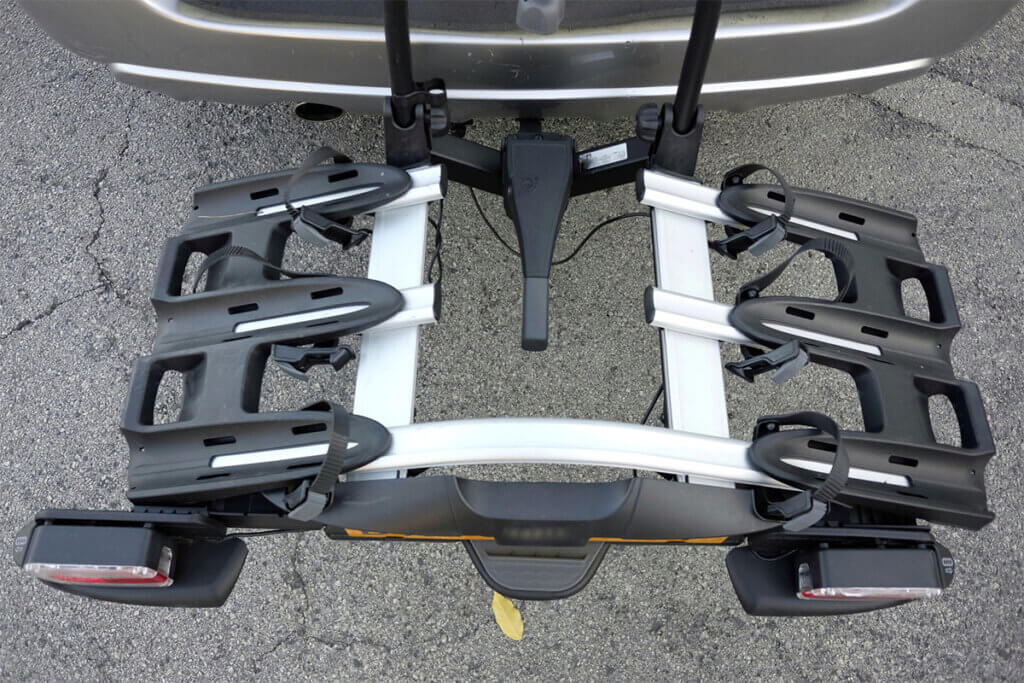
It may be advisable to actually take a look at the models before buying. Especially those who have never used a bicycle carrier before may not be able to imagine the effort involved in securing it. In this respect, it is good to be able to try out a bicycle carrier beforehand. In the case of rear-mounted models, another decisive factor is whether the tailgate can still be opened despite the bicycle carrier being fitted.
What parameters apply to the bicycle?
In addition to the payload, other parameters play a role in relation to the bicycle to be transported. Here it is primarily a matter of the frame size. The distance between the bicycle rails is also interesting. High-quality bicycle carriers are very flexible with regard to these sizes.
Does the carrier have additional functions such as a lighting system and the relevant traffic permits?
A rear-mounted bicycle carrier requires a lighting system with rear lights. In this case, it is important to check whether the bicycle carrier has the appropriate road traffic approval, ideally EU approval.
Does the model allow the mounting of additional accessories such as protective covers for bicycles?
All externally mounted bicycle carriers generally have a high potential for dirt and moisture penetration for the bicycles being transported. Some carriers allow you to put protective covers on the bikes – even when they are attached.
Accessories for bicycle carriers
When choosing a model, it may also be important to know whether special accessories are available for this particular type. The following are generally on sale
- Adapters for different tyre sizes,
- extra anti-theft locks for the bicycle carrier,
- Wall brackets for stowing the bicycle carrier when not in use,
- adapters for various special types of bicycles such as racing bikes or mountain bikes,
- additional brake lights and
- bags and protective covers for dust-free storage when the carrier is not in use.
available.
Transport boxes for the bicycle carrier are also offered, with which users can transport the respective model when not in use, for example at the rear of the vehicle. It must be decided individually in each case what can be regarded as a sensible addition to the purchase of the bicycle carrier.
Well-known brand suppliers of bicycle racks
When buying a high-quality bicycle carrier, it can also be worthwhile to look at well-known brands that regularly achieve good results in tests. Interesting brands in this context include Thule, Atera, the bicycle carriers of various car manufacturers such as VW, EUFAB, Uebler, Fiamma Carry-Bike and Saris.
Price ranges for bicycle carriers
Finally, the price may also be decisive for the choice of bicycle carrier. Roof-mounted bicycle racks are relatively inexpensive, with entry-level models available for less than 100 EUR. In contrast, the more elaborate rear bicycle carriers range in price from 250 EUR upwards.
Care tips: What you should pay attention to when using a bicycle carrier
Care when using a bicycle carrier begins with the selection of the model. High-quality bicycle racks are made to a high standard and usually have steel frames that can handle the payload and provide the necessary stability. Attention should also be paid to the workmanship of the fastening and the devices for the bicycles themselves to ensure that they are stable and durable. A bicycle carrier that is attached to the outside of the vehicle is exposed to wind and weather. Inferior materials can be damaged here and can also damage the vehicle at the attachment point in case of doubt.
Like all devices that are used in everyday life, bicycle racks also show a certain amount of wear and tear. For your own safety and the safety of other road users, bicycle carriers should therefore be checked regularly for their functionality and the stability of the individual components. It is also advisable to clean the carrier at regular intervals after use in accordance with the manufacturer’s instructions. A protective cover when not in use also prolongs the life of the bicycle carrier.
The right material
The material of the bicycle carrier should be as high quality as possible (steel construction), even for entry-level models, to ensure safety and stability.
Especially in the case of bicycle racks that are mounted on the trailer coupling, it is important to note that the coupling itself must also be cared for accordingly. Especially in winter, various salts can clog the trailer coupling. This also directly endangers the use of the bicycle carrier, which no longer has the appropriate stability on a damaged or porous trailer coupling. Experts recommend removing the hitch bar regularly and checking it for signs of corrosion.
Furthermore, the cleaning of the transported bicycles plays a role in the care of the bicycle carrier. These should also be cleaned regularly so that they do not become dirty when mounted on the bicycle carrier.
A bicycle carrier for every requirement
The following questions are helpful in choosing the right bicycle carrier:
Where should the bicycle carrier be mounted?
- At the rear (possibly on the trailer coupling), on the roof or in the vehicle.
Which bicycles do I want to transport?
- Light racing bikes or heavier Dutch bikes, mountain bikes or e-bikes.
What is most important to me in a bicycle carrier?
- High level of safety, additional functions such as theft protection, convenient fastening and handling, good stowability when not in use.
How often do I use the model and in which climatic zones?
- Constantly or rarely on the road with the bike, high or low risk of wear and tear

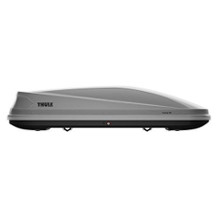
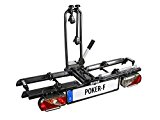
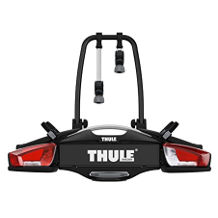
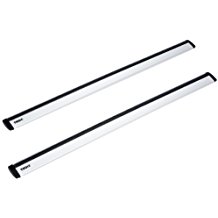
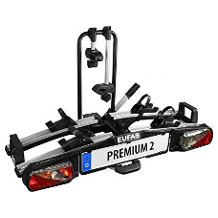
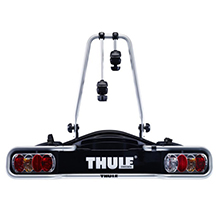
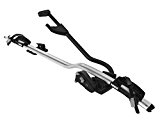
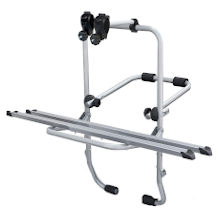
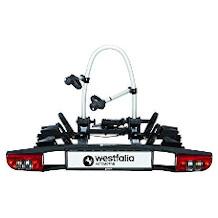
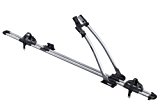
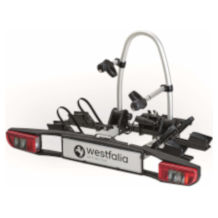

 1,450 reviews
1,450 reviews